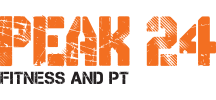
There is a great lack of understanding around what people should eat pre and post work out. Here, we aim to highlight the importance of pre-workout meals to maximize the efficiency of a training session and post workout meals to boost recovery afterwards.
By mastering your pre and post workout nutrition, you can expect to experience:
- Increased fat burning
- Inhibition of fat gain
- Decreased inflammation
- Increased ability to build muscle
- Improve immune function
- Improve bone mass
These benefits seem to work for everyone, regardless of gender or age.
Pre-workout nutrition
If your goal for training is based around fat loss, then the optimal time to train is first thing in the morning. This is due to an overnight fasted state where blood glucose levels will be low. This state optimises the body’s effectiveness at utilising fat for energy.
If you are unable to train at this time, then a perfect pre workout meal should be eaten 2-3 hours prior to the planned exercise session and should mostly consist of protein and fat. A good example of a meal here would be grilled chicken breast and avocado salad seasoned with Himalayan rock salt and fresh lemon and olive oil.
Studies have shown that consuming caffeine 30minutes prior to a workout can boost energy and also improve the fat burning effect during exercise. Other foods to consider prior to a fat burning session are cacao and green tea again both linked to improving the body’s ability to utilize fat stores for energy.
Other popular training goals include performance training and muscle building. Pre workout nutrition for these training goals is very different. The idea with the pre work out meal here is to prime the body to maximize effectiveness of the session. This is linked to the effect it has on important hormones most notably testosterone and growth hormone. A meal with low GI carbs and a good protein source about 2 hours prior to training is optimal. The list below shows a few examples of some good pre workout meals when your goals are performance or muscle building based.
What to eat:
Oats with protein powder: Probably the perfect pre-workout meal, oatmeal with protein powder will give you both short and long-term energy to power through your workout.
Protein of your choice, sweet potato and broccoli: Perfect combination and ratio of low GI carbohydrates and good protein – primes the body for an effective workout.
Post-workout nutrition
By consuming particular nutrients after your workouts (aka post-workout nutrition), you improve your body composition, performance, and overall recovery.
Generally, post-workout nutrition has three specific purposes:
- Replenish energy stores
- Increase muscle size and/or muscle quality
- Repair any damage caused by the workout
What to eat:
Post-workout nutrition requires two things:
Protein to aid in protein synthesis
Carbohydrates to help replace muscle glycogen.
You can either make your own post-workout drink or find a pre-formulated drink that contains rapidly digesting carbohydrates (e.g., maltodextrin, dextrose, glucose, etc) and proteins (e.g., protein hydrolysates or isolates).
Let our personal trainers at Peak 24 develop a personalized nutrition plan to match your individual fitness goals!









 We love clean desserts! Thankfully, you don’t have to miss out on the sweet things in life in order to be healthy. So, the next time your sweet tooth starts speaking to you, answer it with a batch of baked almond peaches. They have no refined sugar and get lots of their sweetness from the peaches themselves. They also have super healthy coconut oil, fibre-rich whole-wheat flour, and a delicious combination of spices. What more could you want?
We love clean desserts! Thankfully, you don’t have to miss out on the sweet things in life in order to be healthy. So, the next time your sweet tooth starts speaking to you, answer it with a batch of baked almond peaches. They have no refined sugar and get lots of their sweetness from the peaches themselves. They also have super healthy coconut oil, fibre-rich whole-wheat flour, and a delicious combination of spices. What more could you want?



